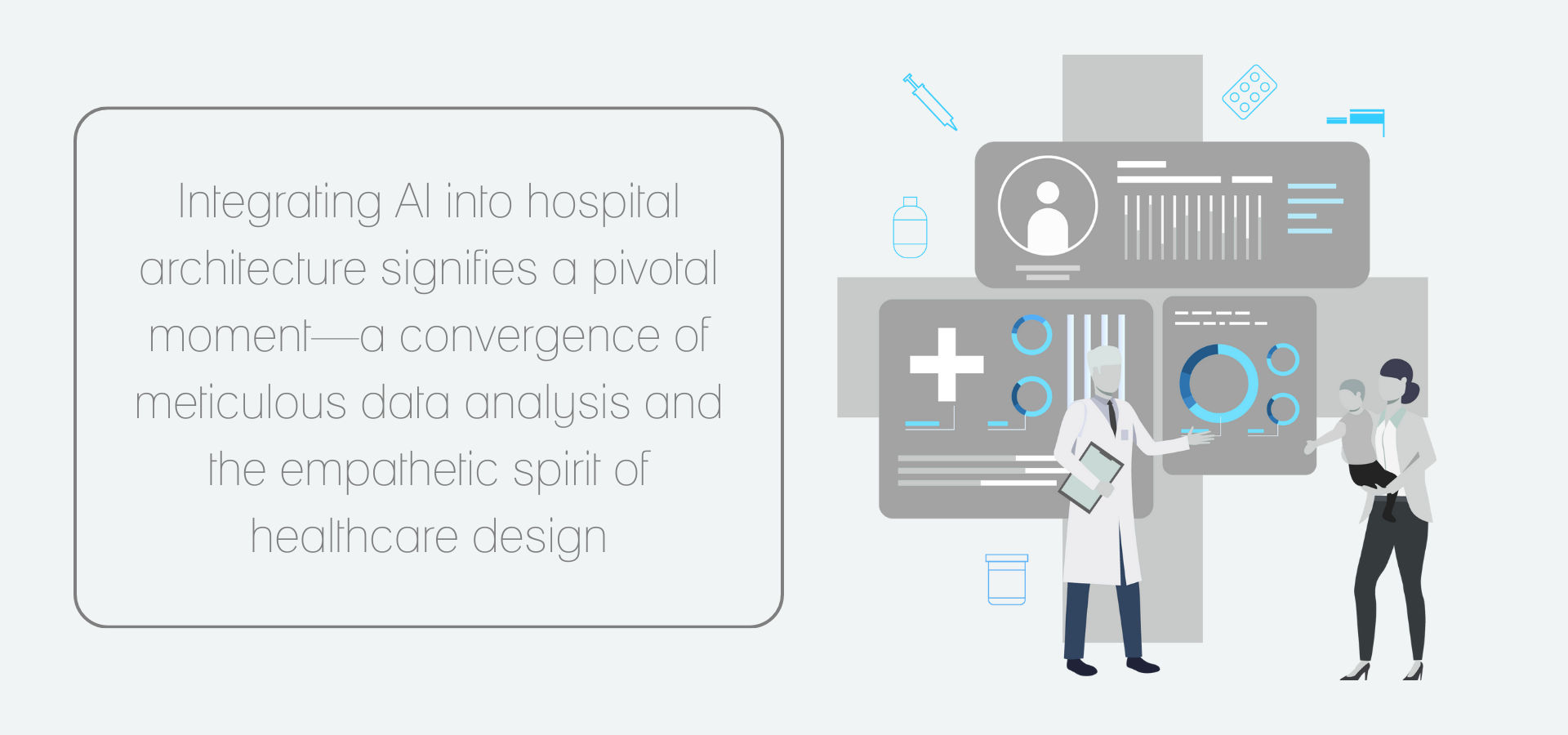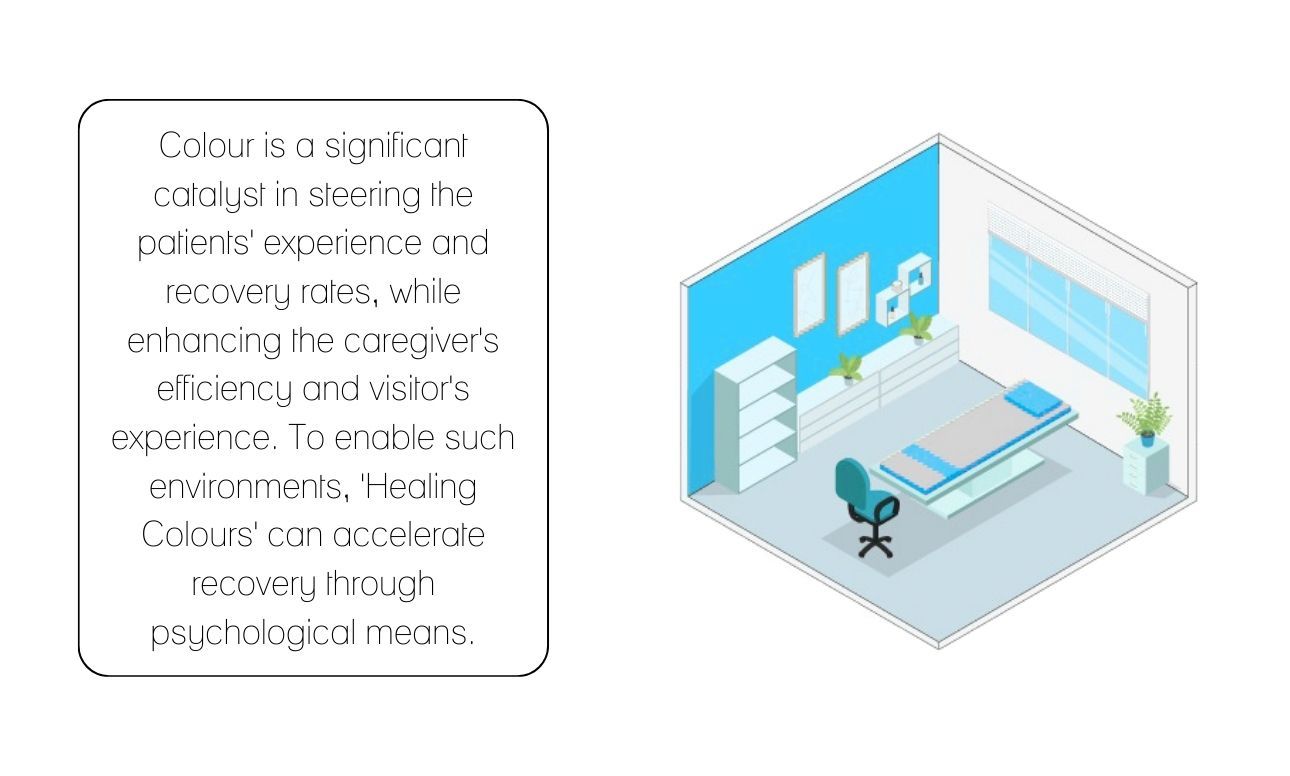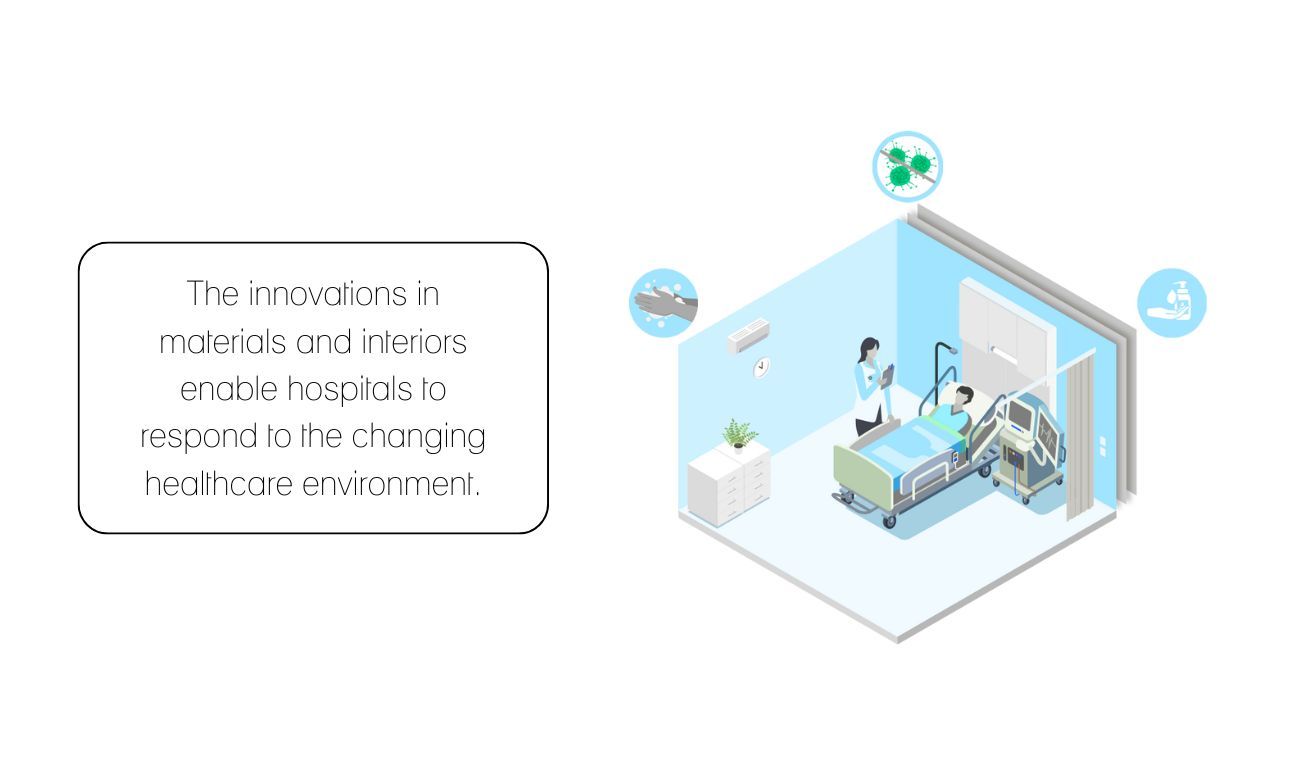

30-10-2023
Efficiency, comfort, and AI: The Future of Hospital Design Ravideep Singh

In an era marked by the relentless march of technology, artificial intelligence (AI) stands at the forefront of transformative change, disrupting industries across the spectrum. On the other hand, when used as a tool, AI proves as a tool to improve outcomes across fields. The architecture and design industry, including the realm of healthcare design, can largely benefit if we can streamline the use of AI to our advantage.
Within the realm of hospital design, AI-assisted architecture offers the opportunity to create spaces that are not just utilitarian but truly therapeutic. The importance of hospital architecture transcends aesthetics; it directly affects patient outcomes, offering environments that reduce stress, catalyse the healing process as well as improve operational efficiency.
Intersection of AI and Hospital Design
Incorporating Artificial Intelligence (AI) and advanced technology into healthcare design can yield significant benefits, and one of the key innovations in this realm is the application of predictive maintenance. Predictive maintenance leverages data from various sensors, including occupancy and daylight sensors, integrated with a centralised Building Management System (BMS) to enhance energy efficiency and prolong the lifespan of critical healthcare infrastructure.
Amalgamation of Data and Design
With AI-assisted design, the architectural landscape of hospital design is at the threshold of transformation—a union of data-driven precision with an empathetic core. AI algorithms, equipped to process vast datasets, unearth critical insights into the needs and preferences of patients. This invaluable intelligence empowers architects to craft spaces that transcend mere functionality, embracing therapeutic attributes.
The role of AI in healthcare planning and design, along with the inclusion of digital interfaces, is carefully instilled along the patient journey, enhancing patient experiences and expediting healing physiologically and psychologically. The intersection of AI with augmented reality (AR) and virtual reality (VR) creates more responsive patient environments, offering unprecedented opportunities for innovative hospital design. Natural Language Processing (NLP) is crucial in patient interactions. Chatbots, powered by AI and NLP, can engage with patients, answer queries, and provide relevant information in a conversational manner, thereby reducing the burden on healthcare staff and ensuring consistent communication. This not only eases patient concerns but also allows healthcare providers to gather data and insights into patient needs and preferences.
This technology improves energy efficiency, reducing costs while ensuring critical healthcare systems remain operational. It prevents unexpected breakdowns, which is crucial in healthcare where downtime can be life-threatening.
Research has time and again underscored the significance of elements such as natural light, the embrace of nature, and an environment steeped in comfort and tranquility. It has been demonstrated that these factors are pivotal in expediting patient recovery. The patient experience can be enhanced by attention to detail, such as the placement of windows to harness maximum natural light—a facet that AI can guide architects in optimising. The AI-driven design ensures the creation of spaces that prioritise patient privacy and comfort, which is indispensable for fostering recovery.
Efficiency, Healing, and Beyond
AI's influence transcends the drawing board and extends into the very foundations of hospitals. Architects and engineers now wield AI as a constructive partner, aiding seamless collaboration and preemptive problem-solving. This harmonious synergy mitigates potential pitfalls and errors, resulting in more efficient and cost-effective construction.
Integrating AI into hospital architecture signifies a pivotal moment—a convergence of meticulous data analysis and the empathetic spirit of healthcare design, both necessary for enhanced healing environments. As AI continues to evolve, so does the potential for healthcare spaces prioritising healing, efficiency, and cost-effectiveness. The future demands to pave the way for a new era of hospital architecture—serving as a testament to the union of technology and compassion.













